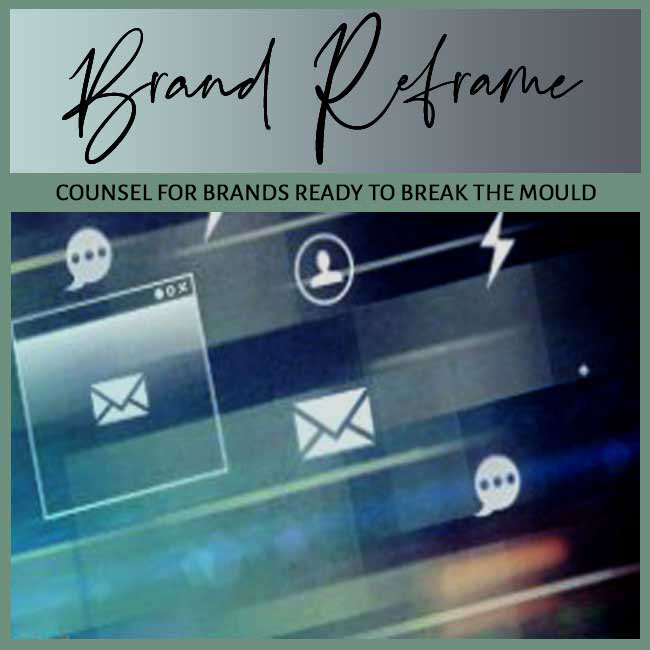
BY: SHOBHA PONNAPPA | BRAND BREAKTHROUGH STRATEGIST | 45 YEARS | 125+ CLIENTS
Brand differentiation is the process of making a brand clearly distinct in a crowded marketplace. It is about defining and communicating what makes your offering uniquely valuable, so customers feel a compelling reason to choose you. Without true differentiation, brands become interchangeable and forced to compete on price. Many leaders assume their difference is obvious, but to buyers it is often invisible. This confusion causes wasted marketing spend and slow growth. Over time, lack of clarity weakens both reputation and profitability.
In my work with brands that struggle to gain traction, I’ve seen that weak differentiation quietly undermines growth. Brands with blurred positioning may attract initial interest but fail to create lasting preference or loyalty. Customers might like the product yet feel no strong reason to stay. Without a clear edge, even the best marketing campaigns underperform. Repeated repositioning attempts also confuse audiences further. Eventually, the brand becomes forgettable.
Markets today are faster and noisier than ever before. Buyers skim and compare options in seconds, often deciding with minimal attention. If your difference is not instantly clear, you risk vanishing into the noise. Once, big advertising budgets or distribution reach could mask weak positioning; that no longer works. Online channels have levelled visibility for everyone. Only true uniqueness cuts through.
Modern audiences reward clarity and uniqueness. Brands that fail to differentiate are pulled into price wars and struggle to hold margin. Investors also look for defensibility that comes from true distinctiveness, not from temporary marketing tricks. In a world of constant choice, differentiation is survival. The right positioning builds authority and premium pricing power. Without it, competitors with bolder focus will win.
At the heart of differentiation lies a crisp answer to: Why should someone choose you over others? A unique, customer-valued promise sets your brand apart. It goes beyond features to highlight the transformation you create. When the value proposition is generic, buyers default to price. Simple but powerful clarity influences purchase decisions faster. It also gives internal teams a clear north star.
A sharp, meaningful promise acts as a shortcut for decision-making and creates trust. It also guides internal strategy, keeping the brand focused instead of drifting into sameness. Leaders must revisit this promise periodically to ensure it still matters. Relevance keeps differentiation alive. Updating wording without losing essence maintains familiarity and freshness. Without this discipline, value messages drift.
Facts and features alone rarely build loyalty. People buy with feelings and later justify with logic. Brands that tap deep emotion secure lasting mental space. Emotional connection might come from values, aspiration, identity, or purpose. It often shapes storytelling more than product specs. Customers remember how a brand makes them feel.
When a brand fails to move the heart, it risks forgettability. Emotional resonance gives audiences reasons to identify with the brand and advocate for it. This emotional bond sustains premium pricing and resilience when markets shift. Without it, the brand fades into noise. Emotional depth also creates natural word-of-mouth. It helps overcome purely functional comparison.
True differentiation means knowing exactly who you are and who you are not. Brands must study competitors and intentionally claim white space. Trying to appeal to everyone blurs the brand and weakens its edge. Clarity comes from choosing a space and owning it. Courage to say no sharpens identity. It builds a moat competitors cannot cross easily.
The strongest brands simplify their competitive difference to one or two clear, ownable points. Whether it is innovation, service, heritage, or convenience, the claim should be memorable and hard to copy. This courage to stand apart protects the brand from commoditisation. Focus beats scattershot attempts. Internal alignment is key so the whole team defends the chosen edge. Without discipline, messages dilute.
Differentiation is not just a tagline; it must be delivered. Every interaction … product, service, packaging, tone … reinforces or erodes uniqueness. Inconsistency weakens credibility and blurs perceived difference. Customers quickly sense when promises and experience do not match. Small gaps create distrust and disengagement. Over time, loyalty drops.
Consistency makes the brand easy to recognise and trust. Over time, a reliable differentiated experience cements mental availability. Brands that fail here often wonder why strong campaigns don’t translate into loyalty. Execution proves positioning true. Teams must be trained to deliver the same edge across channels. Without systems, inconsistency creeps in.
Begin with deep audience and competitor research. Identify unmet needs, ignored frustrations, or overlooked desires in your space. Shape these insights into a single, defendable promise that feels important and credible. Avoid feature lists or vague jargon. Test clarity by asking if customers can repeat your difference in one line. If they can’t, simplify further.
Test your positioning early with real customers. Watch what language makes them lean in or light up. Build your identity, offer, and communications around this sharp promise. Starting with clarity saves costly rework later. Early hires should understand and embody the difference. Reinforce it through culture as much as marketing.
If your existing brand feels lost in sameness, start with honest diagnosis. Map how the market currently sees you versus competitors. Spot where your story sounds generic or mismatched to what you intend. Sometimes the product is solid but the narrative is invisible. This audit also uncovers hidden strengths. It becomes the base for repositioning.
Once you know the gap, make focused, bold moves. Sharpen or reinvent your value proposition. Align every touchpoint … from sales decks to social posts … to reinforce it. Leaders must embody and champion the refreshed difference. Train teams on new language and stories. Consistent rollout avoids confusion.
Chasing every new trend is a frequent trap. It dilutes clarity and makes brands feel unstable. Another mistake is overloading messages with too many claims. Simplicity sticks; complexity confuses. Leaders often fear focus, but it is power. Narrow strength beats broad weakness.
Inconsistency across channels also quietly kills differentiation. A sharp promise cannot survive sloppy execution. Finally, fear of excluding anyone often leads to blandness. Great differentiation means confidently not being for everyone. Brands that try to please all end up memorable to none. Bold clarity attracts loyalty.
A small advisory firm struggled to compete with large agencies. I advised them to focus solely on transforming stalled mid-sized brands, giving them a single powerful edge. Because this focus was unique, they earned recognition and could command premium pricing. No competitor owned that precise positioning. Their narrow scope created stronger inbound referrals. Over time, the niche became their authority space.
A start-up with advanced technology but little emotional appeal could not stand out. I reframed its promise to AI that feels humanly helpful, shaping design, tone, and UX accordingly. Customers felt warmth in a cold category and remembered the experience. Humanising tech became their differentiator. Word-of-mouth grew quickly because users liked the human-friendly tone. The company secured partnerships with non-technical sectors.
An old retail chain was losing younger shoppers despite a strong legacy. I guided them to evolve their message to timeless craftsmanship for today’s world, honouring roots but sounding current. This balance reconnected heritage with fresh relevance and excitement. Modernised storytelling revived growth. Sales rose during key seasonal campaigns. The rebrand also attracted press interest for blending tradition with modernity.
A software product with endless features was confusing buyers. I helped them sharpen their narrative to one clear idea: make compliance effortless. Conversions rose as customers instantly understood the core value. Simplicity replaced complexity and lifted loyalty. Marketing spend became more efficient as clarity spread. Internal teams finally rallied around one mission.
Trying to please everyone left a lifestyle brand bland and forgettable. I repositioned it boldly as luxury for the unapologetically unconventional, attracting a passionate subculture. Sales surged even as some audiences turned away. Bold focus created magnetism. Media began celebrating the fearless stance. Loyal fans became strong advocates, amplifying reach.
A children’s NGO sounded like many others and struggled for donor attention. I reframed its mission as unlocking hidden talent in every child, focusing on empowerment instead of sympathy. Donors responded with renewed energy and commitment. A distinct voice cut through the clutter. Partnerships grew because the new framing inspired corporate sponsors. The NGO sustained donations with less effort.
If buyers compare you only on price, confuse you with rivals, or cannot describe why you are different, the positioning is weak. Stagnant growth despite heavy marketing is another warning sign. A truly differentiated brand creates pull and pricing power. Weak positioning shows in poor loyalty and margin pressure. You may also find sales teams struggling to explain value quickly. Surveys often reveal confusion.
es. Experience, story, and philosophy can create distinctiveness even when products are similar. Differentiation is not just about features; it is about framing and delivering value memorably. Many powerful brands thrive this way. Service models, tone of voice, and brand purpose can stand out even in commodity categories. Creativity often beats novelty.
No. It must feel believable and relevant, not shocking for its own sake. Wild claims without proof damage trust instead of building it. Clarity beats drama for long-term impact. Small but meaningful edges often outperform sensational ones. Focus on credible difference rather than hype.
Timelines vary with scale and execution depth. A narrative refresh can show results in months, while deep repositioning may take years. Consistency across every touchpoint speeds adoption and trust. Rushing without buy-in risks confusion. It’s better to pace and align than to confuse audiences with abrupt change. Internal culture needs time to adapt.
Absolutely. Markets and customers change, so positioning must adapt without betraying its DNA. Sudden pivots feel false, but guided evolution keeps the brand fresh. Managed change protects equity and loyalty. Evolution should preserve core promise while adjusting expression. Brands that refresh wisely stay current without losing trust.
They study whitespace, pricing power, and how hard it is to copy the brand’s promise. They also observe loyalty metrics and cultural resonance. Clear, ownable difference signals lower risk and stronger returns. Defensible uniqueness reassures investors. Investors seek signs of sustainable distinctiveness beyond marketing claims. Evidence of customer advocacy matters greatly.
Explore Brand Differentiation Issues … Real Cases & Fixes
Case Studies
FAQ Insights

"One BIG IDEA can turn brand stagnation into unstoppable movement. Spots are limited each week ... book your breakthrough session now."
Shobha Ponnappa
My Definitive Guides to Other Critical Branding Concepts
Smart insights, real-world frameworks, and idea-driven clarity – designed to help brands move.
Get my fortnightly Brand Reframe newsletter. Smart insights, distilled thinking, and focused momentum to help your brand lead.

Get my free AI strategy guide. Smart prompts, sharper briefs, and practical ways to make AI support your brand momentum.

Just fill in the form to join. Get my newsletter and the guide shown alongside, all with several game-changing tips.